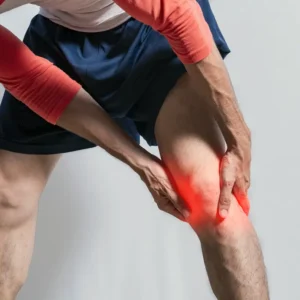
Discover the best sleeping position for IT band pain to reduce discomfort and promote healing. Learn about the importance of proper alignment, supportive pillows, and incorporating stretching exercises for a pain-free night’s sleep.
Understanding IT Band Pain
The Iliotibial (IT) band is a thick band of connective tissue that runs along the outside of the thigh, from the hip to the shin. IT band syndrome is a common condition, especially among runners and cyclists, that occurs when this band becomes tight or inflamed. The pain associated with IT band syndrome can be debilitating, making it difficult to perform daily activities, let alone sleep comfortably. One of the most overlooked aspects of managing IT band pain is finding the best sleeping position that promotes healing and reduces discomfort.
Why Sleep Position Matters
When dealing with IT band pain, the position you sleep in can significantly impact your recovery. Sleeping in a position that aggravates the IT band can lead to increased inflammation and discomfort, making it harder to get the rest you need to heal. On the other hand, finding the best sleeping position for IT band pain can help reduce tension on the affected area, promote better alignment, and ultimately contribute to a faster recovery. This guide will explore various sleeping positions and tips to help you find relief from IT band pain.
Side Sleeping: The Preferred Position
For many people, side sleeping is the most natural and comfortable position. However, if you suffer from IT band pain, sleeping on your side can either help or worsen your condition, depending on which side you choose. The best sleeping position for IT band pain is to lie on the unaffected side, as this prevents additional pressure on the painful area.
When sleeping on your side, it’s crucial to place a pillow between your knees. This simple adjustment can help keep your hips aligned and reduce tension on the IT band. The pillow acts as a buffer, preventing your legs from crossing over and maintaining a neutral position for your hips and lower back.

Back Sleeping: A Balanced Alternative
If side sleeping doesn’t provide relief, back sleeping might be your next best option. When you lie on your back, the weight is distributed evenly across your body, which can help alleviate pressure on the IT band. To make this position more comfortable, place a pillow under your knees. This will help maintain the natural curve of your spine, reducing tension in the lower back and hips, which in turn eases the strain on the IT band.
For added support, consider placing a small pillow or a rolled towel under your lower back. This can provide extra cushioning and help maintain proper alignment while you sleep.
Avoid Sleeping on the Affected Side
One of the most important tips for managing IT band pain while sleeping is to avoid lying on the affected side. Doing so can exacerbate the pain by putting direct pressure on the inflamed IT band. This pressure can lead to increased discomfort and a restless night’s sleep, which can hinder your recovery process. If you’re used to sleeping on your side, try transitioning to the unaffected side or your back to find relief.
The Role of Pillows in Alleviating IT Band Pain
Pillows play a crucial role in finding the best sleeping position for IT band pain. They can provide the necessary support to keep your body aligned and reduce tension on the IT band. When selecting a pillow, consider its thickness and firmness. A pillow that is too thin may not provide enough support, while a pillow that is too thick can cause your spine to misalign. The goal is to find a pillow that keeps your head, neck, and spine in a neutral position, whether you’re sleeping on your side or back.
Experimenting with Different Positions
Every person’s body is unique, and what works for one individual may not work for another. It’s important to experiment with different sleeping positions and pillow arrangements to find what provides the most relief for your IT band pain. Start by trying the recommended positions—side sleeping on the unaffected side with a pillow between your knees, or back sleeping with a pillow under your knees—and adjust as needed based on your comfort level.
Incorporating Stretching and Strengthening Exercises
While finding the best sleeping position for IT band pain is crucial, it’s also important to incorporate stretching and strengthening exercises into your daily routine. These exercises can help address the root cause of IT band pain by improving flexibility and strength in the muscles surrounding the IT band, such as the glutes, hips, and thighs. Regular stretching, especially before bed, can help reduce tension in the IT band and make it easier to find a comfortable sleeping position.
Key Stretches for IT Band Relief
Before going to bed, consider incorporating the following stretches into your routine to help alleviate IT band pain:
- IT Band Stretch: Stand next to a wall with your affected leg closest to the wall. Cross your unaffected leg in front of the affected leg and lean your hips towards the wall. Hold this stretch for 20-30 seconds, feeling a gentle stretch along the outside of your thigh.
- Glute Stretch: Lie on your back with your knees bent. Cross your affected leg over the opposite knee, forming a figure-four shape. Gently pull the uncrossed leg towards your chest until you feel a stretch in your glutes. Hold for 20-30 seconds.
- Hip Flexor Stretch: Kneel on one knee with the other foot in front, forming a 90-degree angle with your front leg. Push your hips forward while keeping your back straight, feeling a stretch in the front of your hip. Hold for 20-30 seconds on each side.
Incorporating these stretches into your bedtime routine can help reduce muscle tightness and improve your sleep quality, making it easier to find the best sleeping position for IT band pain.
Strengthening Exercises for Long-Term Relief
Strengthening the muscles that support the IT band can prevent future flare-ups and promote long-term relief. Focus on exercises that target the glutes, hips, and thighs, as these areas play a crucial role in stabilizing the IT band. Some effective exercises include:
- Clamshells: Lie on your side with your legs bent at a 90-degree angle. Keep your feet together and slowly lift your top knee, opening your legs like a clamshell. Perform 2-3 sets of 10-15 repetitions on each side.
- Hip Bridges: Lie on your back with your knees bent and feet flat on the floor. Lift your hips towards the ceiling, squeezing your glutes at the top of the movement. Perform 2-3 sets of 10-15 repetitions.
- Side Leg Raises: Lie on your side with your legs straight. Lift your top leg towards the ceiling, keeping it straight, and then lower it back down. Perform 2-3 sets of 10-15 repetitions on each side.
By regularly incorporating these strengthening exercises into your routine, you can improve the stability and strength of your hips and glutes, which will help support the IT band and reduce the likelihood of pain while sleeping.

Importance of a Consistent Sleep Routine
In addition to finding the best sleeping position for IT band pain, maintaining a consistent sleep routine is essential for overall recovery. A regular sleep schedule helps regulate your body’s natural circadian rhythm, making it easier to fall asleep and stay asleep. Aim for 7-9 hours of sleep each night, and try to go to bed and wake up at the same time every day, even on weekends.
Creating a relaxing bedtime routine can also improve your sleep quality. Consider activities such as reading, taking a warm bath, or practicing gentle yoga before bed to signal to your body that it’s time to wind down. Avoid stimulating activities, such as using electronic devices or consuming caffeine, in the hours leading up to bedtime.
The Role of Mattress and Bedding in IT Band Pain Relief
Your mattress and bedding can also play a significant role in finding relief from IT band pain. A mattress that is too soft or too firm can cause improper alignment of your spine and hips, leading to increased tension on the IT band. Ideally, your mattress should be medium-firm, providing enough support to keep your spine in a neutral position while also being comfortable.
Additionally, consider the type of pillow you use. A pillow that supports your neck and keeps your head aligned with your spine is crucial, especially if you sleep on your side. If you’re a back sleeper, a thinner pillow that supports the natural curve of your neck may be more appropriate.
Listening to Your Body
One of the most important aspects of managing IT band pain is listening to your body. Pain is your body’s way of signaling that something is wrong, and it’s important not to ignore it. If you find that a particular sleeping position or activity exacerbates your pain, make adjustments as needed. This might mean trying a different sleeping position, using additional pillows for support, or incorporating more stretching and strengthening exercises into your routine.
Seeking Professional Help
If your IT band pain persists despite making adjustments to your sleep position and routine, it may be time to seek professional help. A physical therapist can provide a personalized treatment plan that includes specific stretches, strengthening exercises, and manual therapy techniques to address the underlying causes of your IT band pain. In some cases, a healthcare provider may recommend additional treatments, such as corticosteroid injections or ultrasound therapy, to reduce inflammation and promote healing.
Long-Term Management of IT Band Pain
While finding the best sleeping position for IT band pain is crucial for short-term relief, it’s important to focus on long-term management to prevent future flare-ups. This includes maintaining a regular exercise routine that incorporates both stretching and strengthening exercises, paying attention to your body’s signals, and making lifestyle adjustments as needed.
For athletes, particularly runners and cyclists, it’s essential to ensure that your training routine is balanced and that you’re not overloading your IT band with repetitive motions. Cross-training, proper warm-up and cool-down routines, and using appropriate footwear can all help reduce the risk of developing IT band syndrome.
Conclusion
Managing IT band pain requires a holistic approach that includes finding the best sleeping position, incorporating stretching and strengthening exercises, and making adjustments to your lifestyle and daily routine. By experimenting with different sleeping positions, such as side sleeping on the unaffected side with a pillow between your knees or back sleeping with a pillow under your knees, you can reduce the strain on your IT band and improve your sleep quality.





